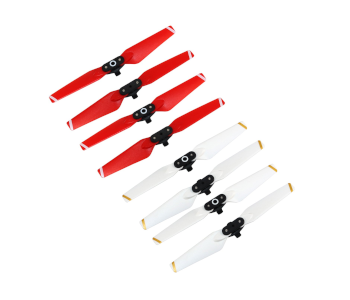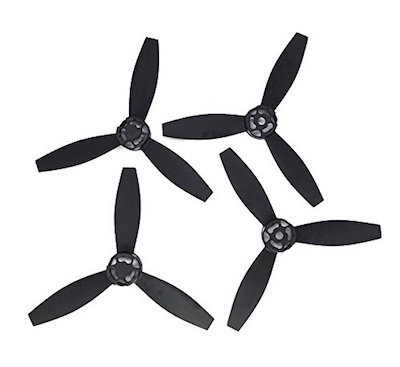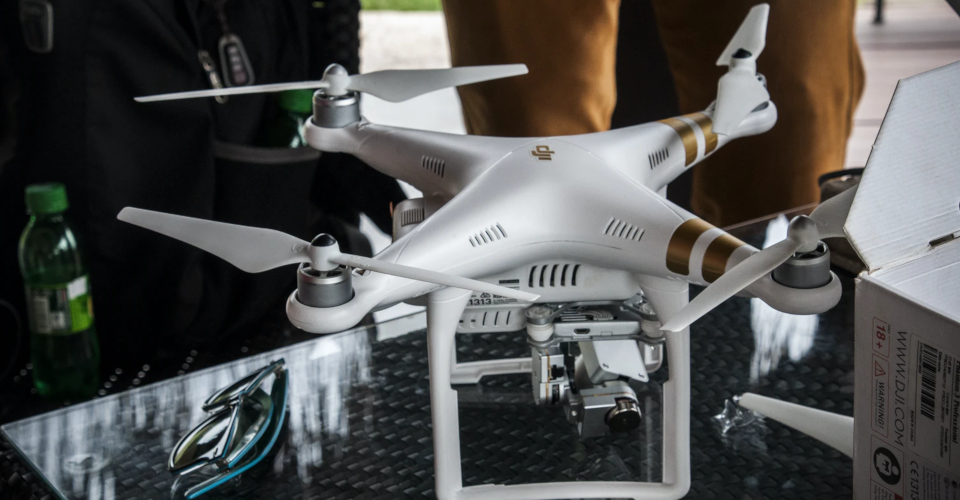Types of Drone Propellers: Everything You Need to Know
Even without understanding how they work, we know instinctively how essential propellers are to drones. Propellers serve to generate lift, allowing drones to gain altitude and hover in place. They also provide the propulsion that lets drones move around simply by “leaning” towards one side. For such soft plastic materials, it’s frankly wonderful how propellers achieve so much.
Most drone pilots have been flying with stock propellers, but have you ever considered swapping yours out for something with a different shape or material? How will this change your propeller’s performance? Check out our comparison of the different types of drone propellers.
How do propellers work?

Before we get into the nitty-gritty of how a propeller’s appearance affects its performance, we must develop a fundamental understanding of how propellers work. We already know that propellers generate both lift and propulsion, but how exactly do they achieve this effect?
In multicopter drones, propellers are connected individually to motors. These motors are then controlled by an Electronic Speed Controller (ESC) which regulates how fast each motor rotates. By varying the speed of rotation of individual motors, the ESC is able to help drones maneuver in several possible ways.
When propellers rotate, they cut through the air and direct it downwards. If the drone is perfectly horizontal, this motion of the propeller creates lift by pushing against the wind. The lifting force generated, as well as the energy it takes to cut through the air, depends on the shape and size of the propeller. Atmospheric conditions, most notably air density, also plays a significant role.
The same force that generates lift can also be used to give a drone some propulsion. This is achieved merely by forcing an imbalance of the speed of rotation between the set of propellers to make the drone’s movement partial to the desired direction.
As we’ve mentioned, the physical properties of the propellers have a significant effect on their performance. In the next sections, we’ll go through the different alternatives for propeller material, size, and shape, and discuss the pros and cons of each option.
Plastic vs. carbon fiber
The stock propellers of most cheap drones are made of plastic. Soft and flexible, plastic propellers are cheap and can be easily replaced. The price point is a major selling point here – because they’re so cheap, drone pilots can easily have several spare sets on hand. Their flexibility also means that they are less prone to cracks when your drone inevitably gets into a crash.
Carbon fiber alternatives are a more expensive alternative and are mostly found on high-end drones. They are much more rigid than plastic but still remain lightweight. This rigidity makes them less prone to vibrating as they rotate, which means that they cut through the air more efficiently and generate lift more consistently. Carbon fiber propellers result in generally more stable flight and less noise.
The biggest downside side of carbon fiber propellers is that they yield so poorly that you are very likely to end up breaking them the moment you crash. Since they are so fragile, you could go through a lot of spare sets very quickly. Considering how expensive they are, making the switch to carbon fiber propellers could prove to be a very costly decision.
Tapered tip vs. bullnose tip

This is a somewhat subtle detail on propellers but is one that you won’t unsee after you’ve noticed it the first time. Some propellers have tips that are pointed at the end, or what the industry calls “tapered.” By being lighter at the end, tapered propellers require less torque to rotate but also generate less lift because of their small surface area. In terms of efficiency, however, tapered propellers come out the winner.
The alternative is a propeller with a more blunted tip. These so-called bullnose propellers are heavier and wider, requiring more torque and drawing more current from the motors as they rotate. Its chief advantage is that they generate a more powerful lift. If speed and lifting capacity is important to your operations, then a bullnose tipped propeller can provide palpable improvement.
Propeller pitch
Propeller pitch, unlike the other categories in this list, isn’t a “this or that” choice. The pitch is an intrinsic property of a propeller defined as the distance that a propeller would move forward if it were to make one exact rotation. Most propellers are defined by two numbers – the diameter and the pitch. It’s worth noting that the pitch is just a theoretical number, as other factors will come into play in a real-world scenario.
The pitch of a propeller depends largely on its pitch angle. A propeller that is almost flat will encounter very little resistance as it slices through the air. However, the lift it generates is also minimal. On the other hand, a propeller with a steep pitch angle will have to overcome a lot of drag as it rotates but will convert more of this wind resistance to generate lift.
Thus, the choice of propeller pitch requires a compromise between power and efficiency. The best choice would be something that strikes a balance between the two, although you may be partial to one or the other based on your needs.
Long vs. short propellers
One of the more obvious differences between propellers is the length of their blades. The more accurate term for this is the diameter of the propeller or the length of the propeller measured tip to tip.
A shorter propeller is lighter and requires less torque to rotate. However, it also generates less lift. The opposite applies to longer propellers. They may draw more power from the motor, but they also create a more powerful lift.
It’s worth noting that between a propeller’s pitch and diameter, its pitch has a more pronounced effect on flight speeds and efficiency.
Two blades vs. three (or more) blades

While most commercially available drones come with propellers with two blades, it’s perfectly possible to replace them with three or four-blade propellers. Again, this becomes a matter of efficiency versus power. Propellers with two blades are lighter and have less drag to overcome as they rotate, reducing the current they draw from the motor but also diminishing how much lift they can generate.
By increasing the number of blades, a propeller can generate more lift but also consumes more power as it becomes heavier and cuts through greater wind resistance. If these qualities are what you need, then you might even be interested in getting a propeller with four or five blades. However, six-blade propellers are already incredibly rare as the added weight of the blades starts to diminish any benefits of increased lift.
Which one should you choose?
As you can see, there are a lot of ways to customize drone propellers. You may not need to go all-in on features that maximize power or efficiency, as some options may provide a combination of both. The most important consideration when choosing a propeller is in how you want to use your drone.
If you want more propeller efficiency and better flight stability…
Some drone jobs may benefit from longer flight time or better flight controls. If you’re shooting aerial photos of an event, the few extra minutes that your drone can remain airborne may be just what you need to capture those crucial moments. You might also find that it’s easier to frame your shots when your drone flies at a more stable clip.
If this sounds like your use case, then you’d be better off with a low-pitch and low-diameter propeller with two blades.
If you want a drone that’s fast and has a higher payload capacity…
There’s a reason why those fancy propellers with bullnose tips and four blades are used primarily for drone racing, and that’s because they generate so much lift and propulsion. In a field where speed is the name of the game, any small advantage provided by a drone’s propellers could be the difference between a win and a loss.
Applications that require lifting heavy payloads can also benefit from using propellers that maximize lift. These high-pitch and high-diameter propellers with more than two blades consume much more power are more liable to wobble while in flight.
If you’re just flying for fun…
If you’re flying purely recreationally, then we can’t really dictate how you want the experience to be. Do you want your drone to be zipping around or do you prefer a drone that simulates smooth sailing? In any case, you would want to stick with plastic propellers. They may be prone to bouts of unstable flight, but they are also remarkably cheap to replace. If you’ve got the budget, then you can still get carbon fiber propellers, by all means.
Final thoughts
Like practically all other components of a drone, its propellers are also replaceable and customizable. While building a DIY drone may not interest most people, it’s worth knowing that the options are out there. In the case of propellers, there are various ways for you to enhance the efficiency or performance of the stock models that came with your drone.

